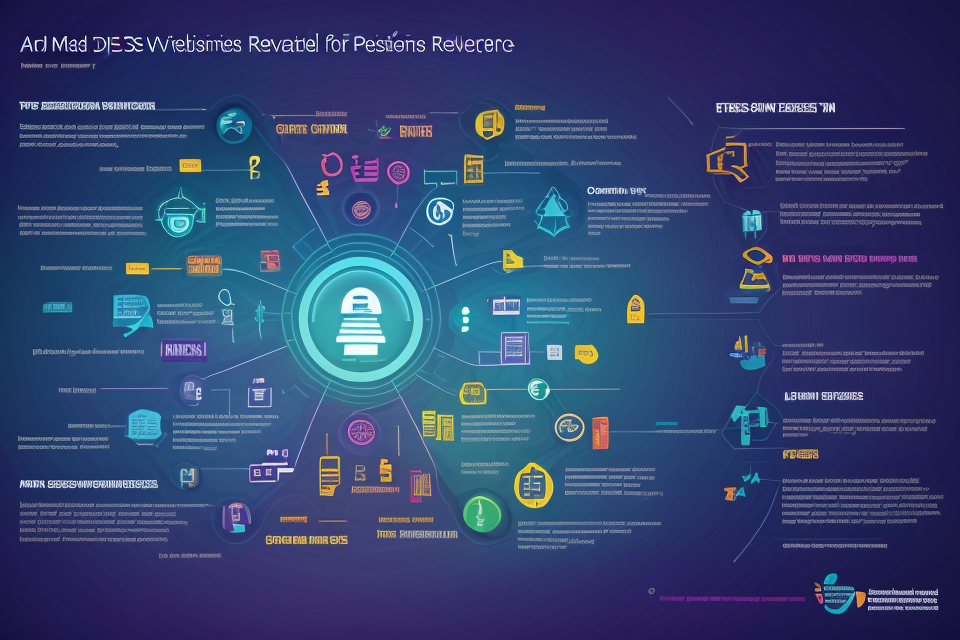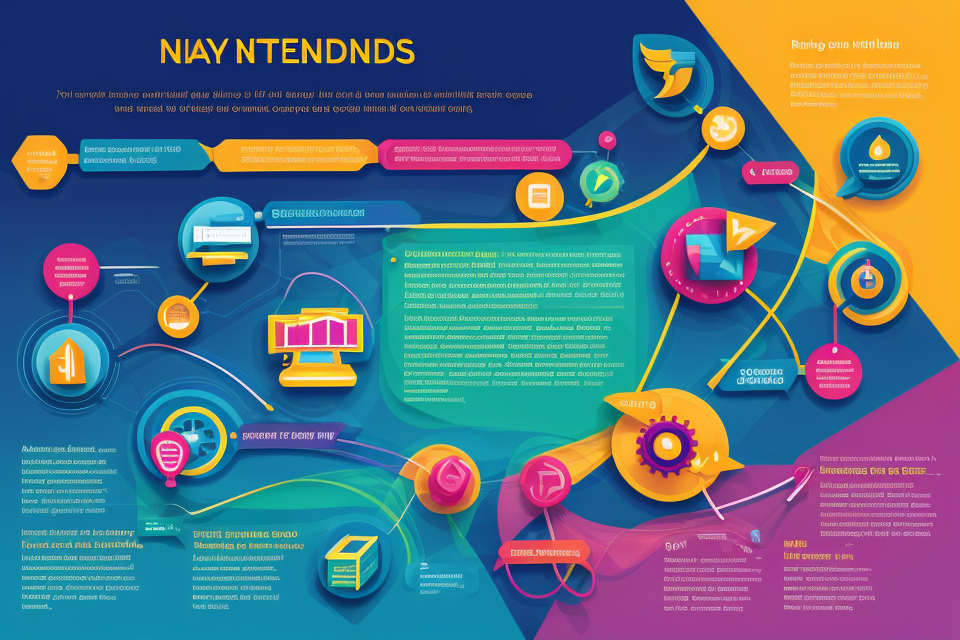Data science is the study of extracting knowledge from data, and it has revolutionized our daily lives in countless ways. From personalized recommendations on Netflix to voice assistants like Siri and Alexa, data science is everywhere. It helps us make better decisions, save time, and improve efficiency. In this comprehensive guide, we will explore how data science is transforming our daily lives and how it is becoming an integral part of our existence. Get ready to discover the power of data science and how it is changing the world as we know it.
Understanding Data Science and Its Applications
What is Data Science?
Key Concepts and Techniques
Data Collection and Processing
Data collection and processing are fundamental components of data science. This involves acquiring and preparing raw data for analysis. The data may be sourced from various channels, such as sensors, databases, web scraping, surveys, or social media. The process includes cleaning, filtering, transforming, and integrating the data to ensure its quality and relevance. Techniques such as data wrangling, data integration, and data normalization are commonly used to preprocess the data.
Machine Learning and Predictive Analytics
Machine learning and predictive analytics are core aspects of data science. These techniques enable the extraction of insights and predictions from data. Machine learning algorithms can learn from historical data to identify patterns, trends, and relationships. They can then make predictions about future events or behaviors. Predictive analytics involves applying statistical models and machine learning algorithms to forecast outcomes, such as customer churn, fraud detection, or demand forecasting.
Data Visualization and Communication
Data visualization and communication are crucial aspects of data science. The purpose of data visualization is to represent complex data in a simple and intuitive manner. This allows data scientists to identify patterns, trends, and anomalies that may not be apparent from raw data. Effective communication of findings is essential for stakeholders to make informed decisions. Data visualization tools, such as scatter plots, heatmaps, and interactive dashboards, help convey insights in a clear and engaging way.
Overall, data science encompasses a range of techniques and tools for collecting, processing, analyzing, and communicating data. It has become an indispensable part of modern life, transforming industries and improving decision-making across various domains.
Real-World Applications of Data Science
Data science has become an integral part of our daily lives, affecting almost every aspect of modern society. It is a field that deals with extracting insights and knowledge from large and complex data sets. Here are some real-world applications of data science:
Industry and Business
Healthcare
In healthcare, data science is used to analyze large amounts of patient data to improve medical outcomes. For example, it can be used to predict disease outbreaks, develop personalized treatment plans, and improve patient care. Data science is also used to analyze medical research and develop new treatments and drugs.
Finance
Data science is used in finance to analyze market trends, identify investment opportunities, and manage risks. It is used to predict stock prices, identify fraudulent activities, and detect anomalies in financial data. Financial institutions use data science to improve their operations and make informed decisions.
Marketing and Advertising
Data science is used in marketing and advertising to understand consumer behavior and preferences. It is used to analyze customer data and create personalized marketing campaigns. Data science is also used to optimize advertising campaigns, improve customer engagement, and increase sales.
Everyday Life
Personalized Recommendations
Data science is used to provide personalized recommendations to individuals based on their preferences and behavior. For example, online retailers use data science to recommend products to customers based on their purchase history and browsing behavior. Personalized recommendations are also used in music and video streaming services to recommend content to users.
Fraud Detection and Prevention
Data science is used to detect and prevent fraud in various industries. For example, credit card companies use data science to detect fraudulent transactions and prevent identity theft. Data science is also used in insurance to detect fraudulent claims and prevent insurance fraud.
Risk Assessment and Prediction
Data science is used to assess and predict risks in various industries. For example, data science is used in weather forecasting to predict weather patterns and natural disasters. It is also used in transportation to predict traffic patterns and optimize routes. Data science is used in finance to assess credit risk and predict financial crises.
Overall, data science has revolutionized our daily lives in various ways, from improving healthcare outcomes to providing personalized recommendations. Its applications are vast and far-reaching, and it will continue to play a significant role in shaping our future.
The Impact of Data Science on Daily Life
Improving Decision-Making and Problem-Solving
Data science has significantly impacted decision-making and problem-solving across various industries. By utilizing advanced analytics and machine learning techniques, organizations can now make informed decisions based on large amounts of data. This section will explore how data science is revolutionizing decision-making and problem-solving in healthcare and finance.
Examples in Healthcare and Finance
Personalized Medicine and Treatment Plans
In healthcare, data science is revolutionizing the way doctors make treatment decisions. By analyzing patient data, including medical history, genetics, and lifestyle factors, doctors can now create personalized treatment plans tailored to each individual’s unique needs. This approach has led to improved patient outcomes and reduced healthcare costs.
Financial Portfolio Management and Investment Strategies
In finance, data science is transforming the way investment decisions are made. By analyzing large amounts of financial data, investors can now identify patterns and trends that were previously invisible. This allows them to make more informed investment decisions and develop more effective investment strategies. Data science is also being used to predict market trends and identify potential risks, helping investors make more profitable investments.
Predictive Maintenance and Equipment Optimization
Data science is also being used to optimize equipment maintenance and improve operational efficiency in manufacturing. By analyzing sensor data from machines, data scientists can predict when maintenance is needed, reducing downtime and improving production efficiency. This approach has been shown to reduce maintenance costs and increase equipment lifespan.
In conclusion, data science is revolutionizing decision-making and problem-solving across various industries. By utilizing advanced analytics and machine learning techniques, organizations can now make informed decisions based on large amounts of data. This has led to improved patient outcomes in healthcare, more informed investment decisions in finance, and optimized equipment maintenance in manufacturing. As data science continues to evolve, we can expect to see even more innovative applications in the future.
Enhancing Efficiency and Productivity
Examples in Transportation and Retail
Traffic Management and Smart Cities
- One of the most significant ways data science is revolutionizing our daily lives is through its impact on traffic management and the development of smart cities.
- By collecting and analyzing real-time data on traffic patterns, data scientists can optimize traffic flow, reduce congestion, and improve overall transportation efficiency.
- This data can also be used to inform city planners and policymakers about areas that need improvement, such as public transportation infrastructure or pedestrian safety.
Inventory Management and Supply Chain Optimization
- Data science is also transforming the retail industry by improving inventory management and supply chain optimization.
- By analyzing sales data, customer preferences, and other relevant information, retailers can make more informed decisions about inventory levels and product offerings.
- This leads to increased efficiency and productivity, as well as improved customer satisfaction and loyalty.
Overall, the use of data science in transportation and retail is leading to significant improvements in efficiency and productivity, ultimately making our daily lives easier and more convenient.
Advancing Research and Scientific Discovery
Data science has significantly impacted the way research and scientific discovery are conducted in various fields. With the ability to analyze vast amounts of data, researchers can uncover patterns and insights that were previously unattainable. In this section, we will explore some examples of how data science is advancing research and scientific discovery in environmental science and social sciences.
Climate Modeling and Sustainability
Climate modeling is a critical aspect of understanding and predicting global climate change. By analyzing data from various sources, such as satellite imagery, weather stations, and climate models, researchers can develop more accurate predictions of future climate conditions. This information can be used to inform policy decisions and develop strategies for mitigating the impacts of climate change.
Data science is also being used to advance sustainability efforts. By analyzing data on resource consumption, waste generation, and energy usage, researchers can identify areas where resources are being used inefficiently and develop strategies for reducing waste and increasing efficiency. This information can be used to inform policy decisions and encourage sustainable practices in businesses and communities.
Social Network Analysis and Public Health
Social network analysis is a method of studying the relationships and interactions between individuals in a population. By analyzing data from social media, online platforms, and other sources, researchers can gain insights into how information and ideas spread through a population. This information can be used to develop targeted interventions and campaigns to promote public health initiatives, such as vaccination programs and disease prevention efforts.
Data science is also being used to analyze health data to identify patterns and risk factors for various diseases. By analyzing data from electronic health records, wearable devices, and other sources, researchers can gain insights into the underlying causes of diseases and develop more effective treatments. This information can be used to inform policy decisions and improve patient outcomes.
In conclusion, data science is revolutionizing the way research and scientific discovery are conducted in various fields. By providing researchers with access to vast amounts of data and advanced analytical tools, data science is enabling researchers to uncover patterns and insights that were previously unattainable. This information can be used to inform policy decisions and develop strategies for addressing some of the most pressing challenges facing society today.
Ethical Considerations and Challenges in Data Science
Privacy and Security Concerns
Risks and Vulnerabilities
- Data Breaches and Cyber Attacks
- Bias and Discrimination in Algorithms
Data science has brought about a revolution in the way we live our lives, but with this revolution comes a set of ethical considerations and challenges. One of the most pressing concerns is privacy and security. As data is collected, stored, and analyzed, there is a risk that sensitive information may be compromised. In this section, we will explore the risks and vulnerabilities associated with privacy and security in data science.
Data Breaches and Cyber Attacks
Data breaches and cyber attacks are a major concern when it comes to privacy and security in data science. When large amounts of data are stored in databases, there is a risk that hackers may gain access to this information. This can lead to identity theft, financial fraud, and other forms of cybercrime. In addition, data breaches can result in reputational damage for companies and individuals.
To mitigate the risk of data breaches, companies must implement strong security measures such as encryption, access controls, and monitoring. They must also be transparent about their data collection and storage practices and inform customers if their data has been compromised.
Bias and Discrimination in Algorithms
Another concern related to privacy and security is bias and discrimination in algorithms. When algorithms are used to make decisions about hiring, lending, or other important matters, there is a risk that they may perpetuate existing biases. For example, an algorithm used to determine creditworthiness may unfairly discriminate against people with certain names or zip codes.
To address this issue, companies must ensure that their algorithms are transparent and auditable. They must also collect diverse data and test their algorithms for bias before deploying them. In addition, regulatory bodies must monitor the use of algorithms to ensure that they do not violate anti-discrimination laws.
In conclusion, privacy and security concerns are a major challenge in data science. Companies must take steps to mitigate the risks associated with data breaches and cyber attacks, while also ensuring that their algorithms are transparent and fair. By addressing these challenges, data science can continue to revolutionize our daily lives in positive ways.
Addressing the Challenges
Best Practices and Regulations
- Data Protection and Privacy Laws
- Transparency and Explainability in Algorithms
Data science, as a rapidly growing field, has the potential to revolutionize our daily lives in numerous ways. However, it is essential to address the ethical considerations and challenges that come with the use of data science. One of the primary concerns is the potential misuse of data, which can lead to privacy violations and biased decision-making. In this section, we will discuss some of the best practices and regulations that can help address these challenges.
Data Protection and Privacy Laws
Data protection and privacy laws play a crucial role in ensuring that individuals’ personal information is protected from unauthorized access or misuse. These laws can vary from country to country, but they generally require organizations to obtain consent before collecting, storing, and using personal data. Additionally, organizations must implement measures to ensure that the data is secure and not shared with third parties without the individual’s consent.
One example of such a law is the General Data Protection Regulation (GDPR) in the European Union. The GDPR sets out strict rules for the collection, storage, and use of personal data, including the requirement for organizations to obtain explicit consent from individuals before collecting their data. Failure to comply with the GDPR can result in significant fines, which can be up to €20 million or 4% of a company’s global annual revenue, whichever is greater.
Transparency and Explainability in Algorithms
Another challenge in data science is ensuring that algorithms used to make decisions are transparent and explainable. Many algorithms used in data science, such as machine learning models, can be complex and difficult to understand. This lack of transparency can lead to biased decision-making, as the underlying assumptions and data used to train the model may not be apparent.
To address this challenge, it is essential to promote transparency and explainability in algorithms. This can be achieved by using simpler models that are easier to understand or by providing explanations for the decisions made by more complex models. Additionally, organizations can provide access to the data used to train the models, which can help individuals understand how the models work and why certain decisions were made.
Overall, addressing the ethical considerations and challenges in data science is essential to ensure that data science is used responsibly and ethically. By implementing best practices and regulations, such as data protection and privacy laws and promoting transparency and explainability in algorithms, we can ensure that data science is used to enhance our daily lives rather than harm it.
The Future of Data Science and Its Impact on Daily Life
Emerging Trends and Technologies
Artificial Intelligence and Machine Learning
- Deep Learning and Neural Networks
- Convolutional Neural Networks (CNNs)
- Image recognition and classification
- Object detection and segmentation
- Recurrent Neural Networks (RNNs)
- Natural language processing (NLP)
- Sentiment analysis
- Generative Adversarial Networks (GANs)
- Image and video generation
- Style transfer
- Convolutional Neural Networks (CNNs)
- Natural Language Processing and Sentiment Analysis
- Text classification and sentiment analysis
- Named entity recognition and text summarization
- Chatbots and virtual assistants
Internet of Things and Big Data
- Smart Homes and Connected Devices
- Energy management and optimization
- Security and surveillance
- Healthcare and assistive technologies
- Real-Time Streaming and Analytics
- Predictive maintenance and asset management
- Customer behavior and preference analysis
- Fraud detection and risk management
Preparing for the Future
Skills and Education
Data Science Education and Training
Data science is a rapidly evolving field, and staying current with the latest tools and techniques is essential for those looking to build a career in this area. Data science education and training programs can provide students with the knowledge and skills they need to succeed in this exciting field. These programs typically cover topics such as statistical analysis, machine learning, data visualization, and programming languages such as Python and R.
Key Skills for the Data-Driven Workforce
In addition to formal education and training, there are several key skills that individuals should focus on developing in order to succeed in a data-driven workforce. These skills include:
- Data analysis and interpretation: The ability to collect and analyze large amounts of data is crucial for success in data science. This includes skills such as statistical analysis, data visualization, and machine learning.
- Programming: Proficiency in programming languages such as Python and R is essential for working with data. These languages allow data scientists to manipulate and analyze data, build models, and create visualizations.
- Communication: Data scientists must be able to effectively communicate their findings to non-technical stakeholders. This includes being able to explain complex concepts in simple terms and present data in a way that is easy to understand.
- Collaboration: Data science is often a team effort, and data scientists must be able to work effectively with others. This includes skills such as project management, teamwork, and collaboration.
Social and Economic Implications
- The Gigabit Economy and Digital Divide
As data science continues to evolve, it is likely that the gigabit economy will become increasingly important. The gigabit economy refers to the idea of using high-speed internet connections to enable new business models and ways of working. However, there is also a risk that the digital divide could widen, with those who have access to high-speed internet at a disadvantage in the job market.
- The Future of Work and Employment
Data science is also likely to have a significant impact on the future of work and employment. As automation and artificial intelligence become more prevalent, many jobs may be replaced by machines. However, data science is also creating new opportunities for employment, particularly in fields such as healthcare, finance, and marketing. Those who are able to develop the skills needed to succeed in a data-driven workforce are likely to be well-positioned for success in the future.
FAQs
1. What is data science and how does it relate to our daily lives?
Data science is a field that involves extracting insights and knowledge from large and complex data sets. It uses statistical and computational methods to analyze and interpret data, with the goal of making informed decisions and solving problems. In our daily lives, data science is used to improve a wide range of services and products, from personalized recommendations on e-commerce websites to traffic management systems that reduce congestion and improve safety.
2. How does data science impact the healthcare industry?
Data science has the potential to revolutionize healthcare by improving patient outcomes and reducing costs. It can be used to analyze electronic health records, medical images, and other data sources to identify patterns and make predictions about patient health. For example, data science can be used to predict the likelihood of a patient developing a certain disease, or to identify the most effective treatment for a particular condition. This can help doctors and other healthcare professionals make more informed decisions and provide better care to their patients.
3. How does data science impact the finance industry?
Data science is transforming the finance industry by enabling the development of new financial products and services, as well as improving risk management and fraud detection. For example, data science can be used to analyze market trends and predict the performance of investments, or to identify potential fraud in financial transactions. This can help financial institutions make better decisions and offer more innovative products to their customers.
4. How does data science impact the retail industry?
Data science is changing the retail industry by enabling the development of personalized shopping experiences and improving supply chain management. For example, data science can be used to analyze customer behavior and preferences, or to optimize inventory management and product pricing. This can help retailers increase sales and improve customer satisfaction.
5. How does data science impact transportation and logistics?
Data science is transforming transportation and logistics by enabling the development of more efficient and sustainable transportation systems. For example, data science can be used to optimize routes and reduce traffic congestion, or to predict maintenance needs for vehicles and infrastructure. This can help transportation companies reduce costs and improve the reliability of their services.



